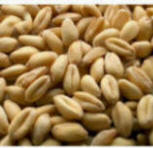Search Cidpusa web
History of Celiac disease
Celiac disease (CD) is a autoimmune disease, general requirement to avoid gluten in the diet. This is a ver common disorder and usually goes undiagnosed. The disease can be called by other names, celiac sprue, coeliac disease, dermatitis herpetiformis (DH), and gluten sensitive enteropathy (GSE). Diseases that can be associated with celiac disease include lactose intolerance,
dermatitis herpetiformis, insulin dependent diabetes mellitus (IDDM), systemic lupus erythematosus, thyroid disease, and autoimmune disorders. Except for direct quotations and medical reference to a disease, CD is the universal term used. Outside the US, the term is often spelled as coeliac.

Gluten is a general term used to describe the toxic protein found in certain grains or their by-products. The major grains that are avoided are: wheat, rye, oats, and barley.
History of Celiac Disease.
In 250 A.D., Galen, a Roman physician, described childhood and adult celiac disease. In 1888, Samuel Gee described celiac disease in Britain and the role of diet in its control. Dicke in the Netherlands during 1950 suggested that certain dietary cereal grains were harmful to children with celiac disease. He also noted that persons previously diagnosed with celiac disease improved during World War II when grain products were in short supply. When grains became more plentiful after the war, the incidence of celiac disease returned to its pre-war levels. In 1954, Paulley first described the intestinal lesion, villus atrophy, in patients with celiac disease. Cyrus L. Rubin and co-workers in the United States demonstrated in 1958 that celiac disease in children and adults were identical disorders. In the 1980's, Michael Marsh and co- workers in Manchester, England, emphasized the role of the immune system in causing intestinal injury in celiac disease.
Continue to abnormal villi in Celiac diases😏